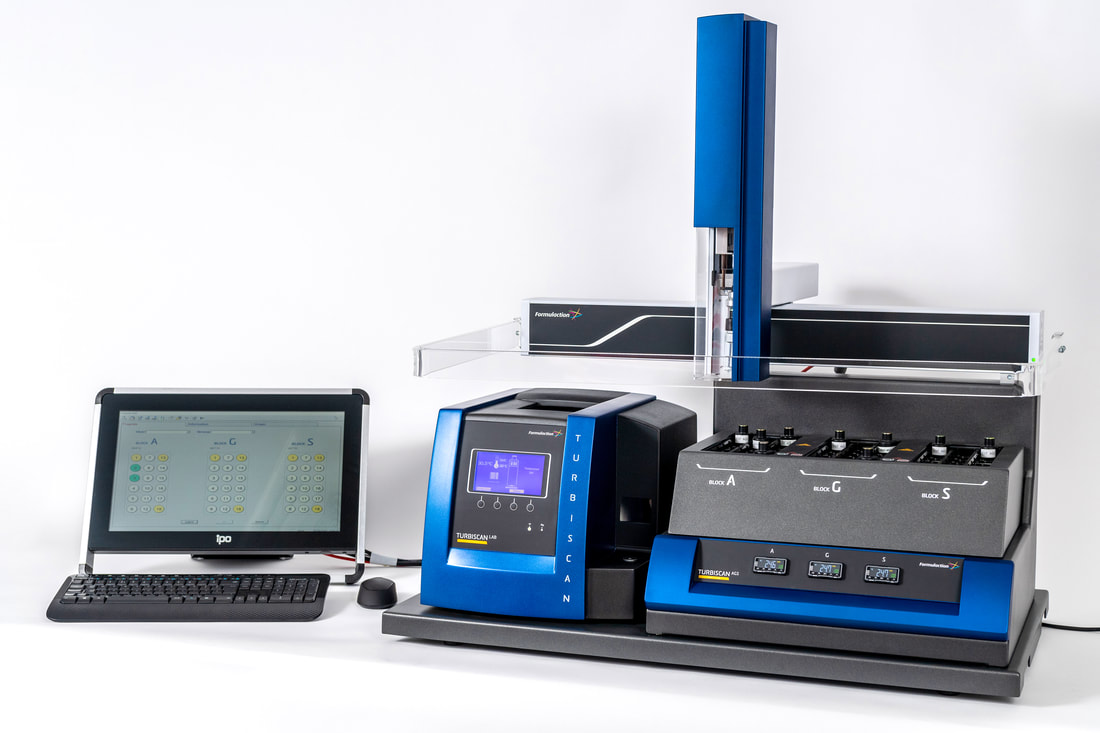|
Those working in the inks industry will know that inkjet formulations contain pigment particles that destabilise over their shelf life. This can lead to instability in forms of particle sedimentation and packing, causing poor product performance and the clogging of inkjet ports, resulting in instrument shutdown while the printer head is cleaned.
Although this issue can be rectified with mixing by jet head movement or manually shaking the ink to redistribute the sample to its original state, predicting the instability in the first place helps to avoid such problems in the future. In this post, we look at how Turbiscan technology by Formulaction is used to quantify and predict this instability related to various inkjet formulations. How does the Turbiscan technology work? The Turbiscan technology is based on Static Multiple Light Scattering (SMLS) which involves sending a light source on to a sample and acquiring both backscattered (BS) and transmitted (T) lights over the entire sample height. Repeating this measurement over time with an adapted frequency allows the instrument to monitor physical stability. The signal is directly linked to particle concentration and size via the Mie theory. How was the study carried out? Two inkjet samples, one with red pigment and the other yellow, were analysed to observe the differences achieved by using different pigments. Each sample was scanned at 30-minute intervals for 3 days to produce full destabilisation profiles. Effects relating to sedimentation, packing, and overall phase separation could then be determined. The samples in this study all displayed similar behaviour, and the unique features of the Turbisoft programme allowed for further quantification of the kinetics responsible for destabilisation. Monitoring the average value of backscattered light at the bottom of the sample (where packing occurs), allows the determination of the packing kinetic for each dispersion. These calculations provide the formulator with the additional knowledge for optimising the formulations to achieve the desired properties. It was found that the yellow pigment has a uniform-packing kinetic, whereas the red pigment has slightly more variation. This is because the red starts more slowly but overtakes the yellow after 14 hours due to it having a more intense kinetic. The destabilisation was then quantified using the Turbiscan Stability Index. This is an algorithm-based calculation in the Turbisoft software that compares all of the destabilisations, and produces a single number for easy, one-click ranking and comparison. What were the results? The raw data produced from this study shows all of the destabilisation phenomena. The top of the sample shows that there is a large negative signal in the backscattering region, which indicates that particles are moving away from this region as the sample begins to clarify. Normally, a sedimentation, would produce a positive peak at the bottom of the sample – due to the increase in volume fraction, within this zone. However, this data shows a decrease within this region. This is caused by an increase in the “average” particle size within the sediment layer = Packing within the sediment layer. The TSI graph plot shows that the red pigment sample destabilises faster than the yellow pigment. This follows the previously seen trend that packing is the predominant instability, and the evaluation of the TSI at only 2 hours allows us to predict further stability differences between the two formulations. The ability of the TSI to quantify the stability of the dispersions in just a matter of hours is a key benefit for the formulating scientist. Summary The study shows that two inkjet formulations provided a similar destabilisation phenomenon, but by only using visual observation it is difficult to show which one is the most stable. It further highlights that the Turbiscan technology can provide the following benefits:
To find out more about how Turbiscan technology can help you with your inkjet formulations, please call us on 01442 876777 or email: sales@fullbrook.com.
0 Comments
Leave a Reply. |
C HumphreysOctober 2016 Fullbrook Systems Ltd move to new premises in Hemel Hempstead. After being in the same offices for many years the company moved to more suitable premises Archives
February 2023
Categories |


 RSS Feed
RSS Feed